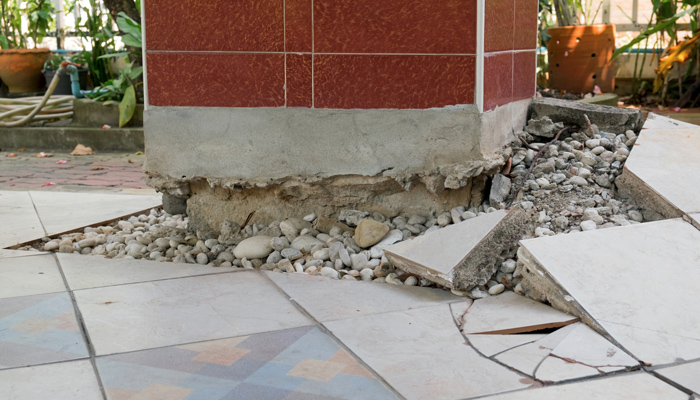How to Take Care of your Electricals in Heatwaves
How to Take Care of your Electricals in Heatwaves
According to NASA and the National Oceanic and Atmospheric Administration (NOAA), the summer of 2022 was ranked among the hottest on record. It was the second-hottest summer on record in the Northern Hemisphere and Europe had its warmest August and meteorological summer to date since global records began in 1880 (NOAA 2022).
During the summer, we are regularly reminded to adapt our regular routine to ensure we were taking care of ourselves and others during the heatwaves but in this article, we want to shift the focus to the safety of your electricals during the warmer spells.
We’ve pulled together some of the best practises for caring for our electricals in heatwaves.
1. How to protect your electric car in a heatwave
In China alone there were 680 electric car fires in the first quarter of 2022 (Batteries News, 2022). Although it has been said that electric vehicles have an extremely low chance of catching fire (Hill, 2022) there are still several precautions that we can take to care for our electric vehicle during a heatwave:
- Park your electric vehicle in the shade – It sounds obvious but to keep your electric vehicle as cool as possible, try to find a parking spot in the shade. Bear in mind that the areas in the shade will change throughout the day so it’s worth picking a spot that may not be in the shade initially but will be during the hottest part of the day.
- Invest in windscreen sunshades – Studies have shown that sunshades can help reduce the temperature in your car by as much as 30 degrees (Complete Car Comfort, 2022). You can pick up sunshades for very little, so it is a cost-effective sure fire way of helping your electric vehicle stay cooler.
- Don’t charge your electric vehicle fully – It sounds counter intuitive not to charge your electric vehicle fully. Especially when you discover that turning on the air conditioning can reduce your electric vehicles range by 17% (Yesss, 2022). However, it is recommended that you only charge your battery to 80% especially when temperatures are high for optimal battery usage. Failing to do this can cause cell degradation (Yesss, 2022).
- Try to avoid long journeys during the hottest part of the day – Again this sounds self-explanatory, but your electric vehicle uses more energy when its hot so by driving during the cooler parts of the day your electric vehicle won’t have to work as hard.
- Use the preconditioning feature – In many new electric cars, you can cool down your car before you start your journey and avoid depleting your battery during your drive using your aircon. It was found that using your aircon can reduce the range of your electric car by 17% (Zap Map, 2022).
2. How to protect your electric scooters and e-bikes in a heatwave
Similarly, to electric vehicles, electric scooters and e-bikes need special attention during the heatwave. Many of the precautions mentioned above are still applicable to avoid electric scooter fires and e-bike fires. You should still try to park your electric bike and scooters in the shade and avoid long journeys in the hottest parts of the day. In the last two years, e-bike and e-scooter fires have increased by more than 400%. In 2020 there were 40 fires, the following year this more than doubled to 106 and so far in 2020 there have been 203 e-bike and e-scooter fires (Choi, 2022).
- Always carry a spare battery / charger - It’s important to keep an eye on the level of your battery on the journey. If you have a spare battery, make sure to swap out the batteries regularly to avoid overheating. When you change them, recharge the depleted battery so you don’t find it gets too low.
- Ensure that you stay cool too – Riding your e-bike and e-scooter can build up a sweat at the best of times, add in the high temperature weather and it’s easy to find that you too are overheating. Try to avoid wearing heavy, non-breathable material. If you use your e-bike / e-scooter to commute to/from work, consider investing in a backpack and take a change of clothes with you and plenty of water to keep hydrated.
3. How to protect your gadgets in a heatwave
It’s not just our electric transportation that can’t keep up in the hot weather, our household gadgets can also struggle:
- Ventilate your devices – Remove extra layers such as protective cases and clean your devices to remove any lint in the vents to reduce the change of overheating.
- Turn off devices when not in use – We’ve grown accustomed to having multiple devices at our fingertips. Take some time to disconnect from your devices when you can. If you’re not using Alexa, turn her off. If you’ve got the telly on in the background but you’re playing on your phone – choose one or the other and allow your devices time to cool down during the heatwave. Some devices such as your phone can start to lag performance wise when it overheats so if you can get away with using it less then you could notice a difference.
- Unplug – Once your device has reached full capacity unplug it. Leaving your device on charge when full can cause additional heat which is the last thing you need in a heatwave.
- Find the coolest place in your house – Now we’re not telling you to keep your electricals in the freezer but find a cool spot that’s out of direct sunlight when you’re not using them.
- Keep your fridge/freezer closed as much as possible – During a heatwave, we tend to gravitate to cool refreshments from the fridge/freezer but try to keep the doors closed as much as possible. Not only does bacteria thrive in the heat, but the appliance will also use more energy to regulate the temperature.
- Turn the brightness down – Having the brightness turned up on your devices uses more energy and creates more heat so keep your devices out of direct sunlight and your brightness turned down.
Sources
- BATTERIES NEWS, 2022. 7 Battery Electric Cars a Day Catch Fire in China: The Most Involved Brands [online] https://batteriesnews.com/7-battery-electric-cars-day-catch-fire-china-most-involved-brands/
- CHOI, C. 2022. Concern over huge rise in fires caused by e-bike and e-scooter batteries [online] https://www.itv.com/news/2022-08-19/concern-over-huge-rise-in-fires-caused-by-e-bike-and-e-scooter-batteries
- COMPLETE CAR COMFORT, 2022. Do Car Sunshades Really Work? [online] https://completecarcomfort.com/do-sunshades-work/
- HILL, 2022. EVs have extremely low chance of catching fire but hybrids more risky data shows. [online] https://thedriven.io/2022/01/11/evs-have-extremely-low-chance-of-catching-fire-but-hybrids-more-risky-data-shows/
- NOAA, 2022. Earth had its 6th warmest August on record. [online] https://www.noaa.gov/news/earth-had-its-6th-warmest-august-on-record
- YESSS, 2022. How to Take Care of Your Electric Vehicle (EV) During A Heatwave. [online]
- ZAP MAP, 2022. Top tips for EV drivers in hot weather [online] https://www.zap-map.com/tips-electric-cars-hot-weather/
About the author
James Cooper is a respected industry leader with around 10 years' experience in the home and property insurance sector. He works across a broad range of insurance product and policy development and delivery, including product development; customer sales and marketing; and P&L accountability.
Date: August 15, 2024
Category: Home and Property











